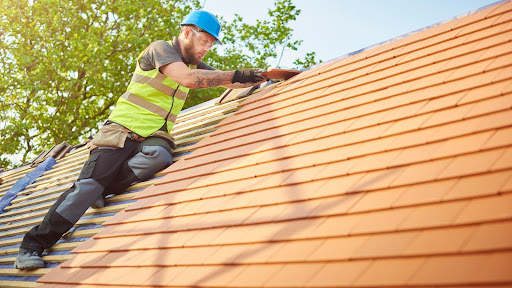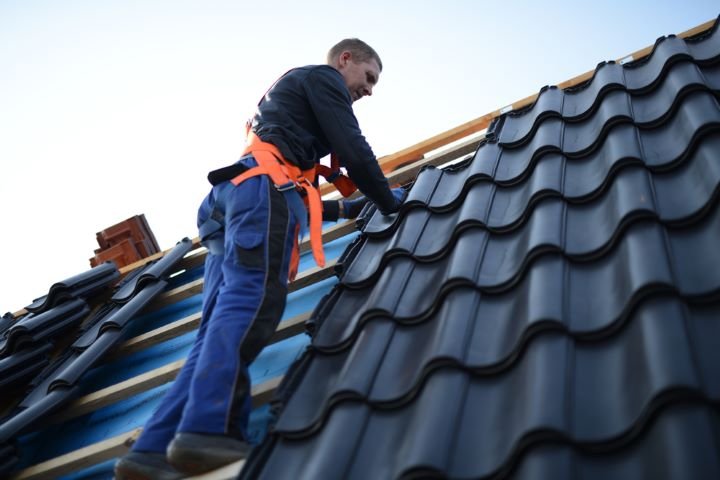Flat Roof Installation in Cuyahoga Falls: Expert Service for Your Property
Flat Roof Installation in Cuyahoga Falls: Expert Service for Your Property
Blog Article
A Comprehensive Guide to Effective Roof Covering Flat Roof Setup
The complexities of level roofing installment demand a precise strategy, starting with a detailed understanding of different flat roof covering kinds and the vital materials required for optimum performance. An effective installment hinges not only on the selection of products however also on the prep work and implementation of each action involved in the procedure.
Understanding Flat Roofing System Kind
When considering flat roofs, it is vital to comprehend the different kinds available, as each offers distinct benefits and downsides tailored to particular demands. One of the most typical types of level roofing systems consist of Built-Up Roofing (BUR), Changed Bitumen, and Single-Ply membrane layers.
Built-Up Roof covering contains several layers of asphalt and gravel, providing superb sturdiness and weather condition resistance. It is particularly useful in locations susceptible to serious climate problems yet might need even more upkeep due to its complex building.
Modified Asphalt is a popular option for its ease of installment and adaptability. It often uses a self-adhesive or torch-applied approach, which can be useful for quick fixings and long-term efficiency. Nonetheless, its lifespan can be shorter compared to BUR.
Single-Ply membranes, consisting of Thermoplastic Olefin (TPO) and Ethylene Propylene Diene Monomer (EPDM), are identified for their lightweight nature and energy effectiveness. These materials are often favored for industrial structures as a result of their cost-effectiveness and simplicity of installation (Cleveland Roofing Specialists). They might not give the very same degree of insulation as other choices.
Each roof covering type requires mindful consideration based upon climate, budget, and specific task demands.
Vital Materials for Flat Roof Covering
A range of necessary products are critical for the effective setup of flat roof. The option of products directly effects durability, efficiency, and general effectiveness.
One of the primary products is the roofing membrane, which can be created from various materials such as thermoplastic polyolefin (TPO), ethylene propylene diene monomer (EPDM), or PVC. Each type uses distinct advantages, including UV resistance and versatility, which are essential for long term efficiency.
Along with the membrane, insulation materials play a considerable duty in power effectiveness. Inflexible foam boards or polyisocyanurate insulation are preferred selections, as they supply exceptional thermal resistance and moisture management.
Additionally, roofing adhesives and sealers are important for making sure a watertight setup. These products must work with the picked membrane to avoid degeneration with time.
Planning For Setup
Proper prep work is vital for a successful level roof setup, as it lays the foundation for a resilient and efficient roof covering system. Begin by performing a comprehensive assessment of the existing roofing structure.
Following, gather all needed tools and products, guaranteeing that they fulfill market standards. This includes waterproof membrane layers, insulation, blinking, and bolts. Familiarize on your own with the producer's specifications, as adherence to these standards is essential for warranty purposes.
Think about weather condition conditions; avoid setup throughout hefty rainfall or extreme temperature levels, which can impact product efficiency. By taking these preparatory actions, you can boost the chance of an effective flat roof installation that satisfies both structural and visual needs.
Step-by-Step Installment Process
With the groundwork established with extensive prep work, the following phase includes implementing the flat roof setup methodically. This action is critical for maintaining the roof covering's honesty over time.
Complying with the vapor barrier installation, lay down insulation boards, guaranteeing they fit snugly together to reduce thermal connecting. Secure the insulation link with suitable bolts based on the roofing kind and neighborhood building codes. When the insulation is in location, it's time to apply the roof membrane layer. Depending on the picked material-- such as TPO, EPDM, or changed bitumen-- mount the membrane layer according to the maker's specifications.
Ensure proper overlap at seams and edges to produce a leak-proof seal. Use adhesives, mechanical bolts, or warmth welding as called for. Mount flashing around perimeters, vents, and any type of roof covering penetrations to boost waterproofing. After installment, conduct a detailed inspection to identify any type of prospective issues before concluding the project, ensuring a trusted and robust level roof system.
Upkeep Tips for Long Life
Regular upkeep is important to guarantee the durability and performance of a flat roof. Among the primary tasks is to carry out routine examinations at the very least twice a year, preferably in spring and autumn. Throughout these inspections, seek indications of wear, such as blisters, fractures, or pooling water, which can show underlying issues.

Guaranteeing proper drainage is critical to stop water accumulation. Examine and clear gutters, downspouts, and scuppers to ensure unobstructed water flow. Furthermore, check seals around vents, skylights, and other infiltrations for any kind of signs of deterioration, applying caulk or sealer as needed to preserve a water tight barrier.
Finally, consider professional maintenance services every few years for extensive examinations and fixings. By adhering to these upkeep suggestions, you can substantially prolong the life of your flat roofing system, guaranteeing it remains a trustworthy guard versus the components.
Final Thought
Effective flat roof installation demands a systematic Visit Website strategy including extensive examinations, product choice, and thorough preparation. Sticking to the laid out steps during the installation process guarantees the appropriate application of roof covering membrane layers and insulation while boosting waterproofing via efficient blinking installment. Implementing regular upkeep methods considerably adds to the long life of the roof covering system. By complying with these guidelines, a resilient and dependable level roof covering service can be attained, with the ability of enduring numerous environmental conditions.
The ins and outs of flat roofing system installment need a meticulous method, starting with a detailed understanding of numerous level roof covering types and the crucial products needed for optimum performance.Appropriate prep work is necessary for an effective flat roof installment, as it lays the foundation for a long lasting and effective roof official statement covering system. After installment, perform an extensive examination to recognize any kind of prospective concerns before ending the job, ensuring a dependable and robust flat roof covering system.

Report this page